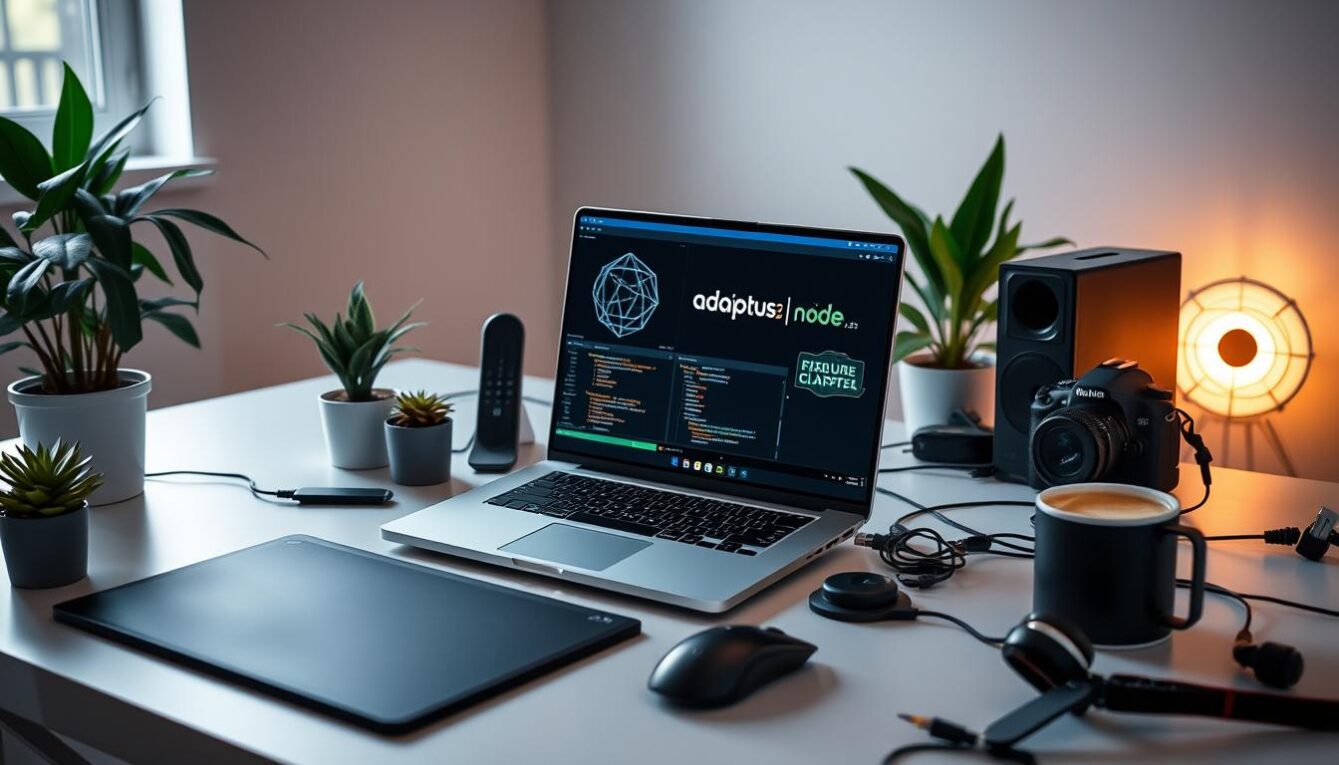Building landing pages that actually sell is a key skill for anyone in online marketing. A well-designed landing page can significantly increase conversions and drive sales when it effectively captures attention and addresses visitor needs. By focusing on the right elements, anyone can create a page that not only attracts visitors but also encourages them to take action.

The effectiveness of a landing page often comes down to understanding the audience’s psychology and integrating essential design and content strategies. From visuals to clear calls to action, every detail plays a role in guiding the user experience. By using data and testing approaches, marketers can refine their pages and enhance performance.
Creating landing pages that convert takes effort and awareness of what works. With the right techniques and insights, marketers can turn casual browsers into loyal customers.
Key Takeaways
- Strong landing pages focus on understanding the audience’s needs.
- Clear design and targeted content lead to higher conversion rates.
- Regular testing and adjustments improve landing page effectiveness.
The Psychology Behind Effective Landing Pages

Effective landing pages use psychology to guide visitors toward taking action. Understanding how people think can make a big difference.
1. Attention Grabbing:
- Use strong headlines to capture interest.
- Bright colors and images draw the eye.
2. Trust Building:
- Testimonials and reviews create trust.
- Security badges reassure visitors during checkout.
3. Simplicity:
- Keep the design clean and focused.
- Limit choices to avoid overwhelming visitors.
4. Urgency:
- Use phrases like “Limited Time Offer” to create urgency.
- Countdown timers can motivate quick decisions.
5. Clear Call to Action (CTA):
- Make CTAs stand out with color and size.
- Use action words like “Get Started” or “Join Now.”
6. Social Proof:
- Show how many people have bought a product.
- Mention popular brands that use the service.
By applying these principles, landing pages can be more appealing, trustworthy, and effective. Understanding visitor behavior helps in crafting messages and designs that encourage action.
Essential Components of High-Converting Landing Pages

Creating effective landing pages requires key elements that grab attention and guide viewers toward a desired action. A well-crafted landing page combines strong messaging, appealing visuals, and clear instruction to improve conversion rates.
Headlines That Capture Attention
A strong headline is the first thing visitors see. It must be clear and concise. Headlines should state what the offer is and why it matters. For example, “Get 50% Off Your First Order” immediately tells the visitor about the value.
Using strong action words can add urgency and motivation. Words like “Discover,” “Unlock,” or “Join” help to inspire action. A/B testing different headlines can show which phrases work best.
Lastly, keep headlines relevant to the overall message. It should match the ad or link that brought the visitor. This continuity helps build trust and encourages further reading.
Compelling Value Propositions
A value proposition describes what makes the offer unique and beneficial. It answers the question, “What’s in it for me?” A clear and attractive value proposition can significantly boost conversions.
To create a strong proposition, be specific about the benefits. Instead of just saying “Great service,” mention “24/7 customer support available.” This detail explains why the service is better.
Using bullet points can help highlight key features. For instance:
- Fast shipping: Get your products within two days.
- Money-back guarantee: No risk when you try.
- Exclusive offers: Deals only available on this page.
These points help the visitor understand why they should take action.
Engaging Visual Elements
Visual elements can enhance a landing page’s appeal. High-quality images or videos draw attention and can explain the offer better than text alone.
It’s important to use images that relate directly to the product or service. For example, showing the product being used can create a connection with the viewer.
Colors also matter. They can influence emotions and decisions. Using contrasting colors for buttons helps them stand out. A clear image above the fold can encourage the visitor to keep looking.
Infographics or short videos can explain complex ideas simply and quickly. This helps visitors understand the offer without overwhelming them with information.
Clear Call-to-Action Buttons
The call-to-action (CTA) is a crucial part of any landing page. It instructs visitors on what to do next, such as “Sign Up Now” or “Buy Today.”
CTAs should be easily visible and accessible. Using a bright color for the button can make it pop. Placing the button above the fold ensures visitors see it without scrolling.
Using action-oriented language in the CTA can increase clicks. Phrases like “Get Started,” “Try Free,” or “Claim Your Discount” create a sense of urgency.
Make sure that the CTA is straightforward and easy to understand. Visitors should know exactly what will happen when they click the button. Clear wording leads to higher conversion rates.
Content Strategies for Engaging Visitors

Engaging visitors on a landing page requires specific strategies. These methods focus on crafting clear messages, connecting emotionally, and building trust. The following strategies can significantly improve visitor engagement.
Crafting Persuasive Copy
Persuasive copy is key to capturing attention. It should be clear and direct. Use short sentences and strong action words. Highlight benefits over features. For example, instead of saying “Our software has several tools,” say “Transform your business with our all-in-one solution.”
Tips for effective copy:
- Use bullet points for easy reading.
- Address the visitor’s pain points.
- Create a sense of urgency. Phrases like “Limited time offer!” can motivate quick decisions.
The goal is to connect with visitors and encourage them to take action.
Using Storytelling to Connect
Storytelling can create a deeper connection with visitors. A relatable story can make a brand memorable. It helps customers see themselves using the product. Start with a challenge, showcase the solution, and present a successful outcome.
Key elements of effective storytelling include:
- Characters: Introduce a protagonist that visitors can relate to.
- Conflict: Highlight a problem that resonates with the audience.
- Resolution: Show how the product helps achieve success.
This approach makes the message more engaging and personal.
Incorporating Social Proof
Social proof builds credibility and trust. Showing that others value a product encourages new visitors to engage. This can be done through statistics, user numbers, or mentions in the media. For instance, “Join over 10,000 satisfied users!” creates reassurance.
Ways to include social proof:
- Display customer reviews prominently.
- List any awards or recognitions.
- Include logos of well-known clients.
This strategy can influence potential customers by showing them that they are not alone in their choice.
Leveraging Customer Testimonials
Customer testimonials are powerful tools for engagement. They provide real-life experiences that can sway potential buyers. A testimonial should highlight specific benefits and outcomes. This increases authenticity and relatability.
Best practices for using testimonials:
- Use full names and photos for credibility.
- Share diverse experiences to cover various customer backgrounds.
- Keep them concise to maintain interest.
Highlight how the product solved a problem for the customer. This approach encourages others to envision similar positive experiences.
Design Principles for Landing Pages That Sell

Creating effective landing pages requires attention to key design principles. These elements help capture the audience’s attention and guide them toward taking action. Well-chosen colors, a responsive layout, minimalist design, and a smooth user experience are crucial.
Color Schemes and Visual Hierarchy
Choosing the right color scheme is essential for attracting attention. Colors evoke emotions and can influence decisions. A common approach is to use a primary color for calls to action and complementary colors for backgrounds and text.
Visual hierarchy helps users navigate the page. Headlines should stand out through size, weight, and color. Important elements like buttons should be easily distinguishable. Using contrast effectively can draw focus to key areas, encouraging visitors to engage.
Responsive and Mobile-Friendly Layouts
A significant portion of web traffic comes from mobile devices. Landing pages must adapt to different screen sizes to provide a good user experience. Using flexible grids and images ensures that content looks great on any device.
Mobile-friendly layouts also speed up loading times. Reducing the number of images or using optimized graphics can enhance performance. A seamless experience across devices minimizes frustration and helps keep potential customers engaged.
Minimalist Design and White Space
Minimalism in design can lead to clearer communication. A cluttered page may overwhelm visitors, making them less likely to take action. Using white space effectively allows important elements to breathe and stand out.
Focusing on essential content, like clear benefits and compelling calls to action, helps maintain user interest. Too many options can lead to confusion. A simple layout encourages users to engage without distraction.
User Experience and Navigation
User experience is critical for landing pages. Clear navigation helps users find what they need quickly. Relevant links should be easy to access without excessive scrolling.
Feedback on actions, such as hovering over buttons or filling out forms, enriches the user experience. Providing reassurance, like displaying security certifications, builds trust. When users feel secure, they are more likely to convert.
Optimizing Landing Pages for Search Engines
To attract more visitors, landing pages must be optimized for search engines. This involves using the right keywords and ensuring technical aspects are in place. Important elements include keyword research, on-page SEO, and speed optimization.
Keyword Research for Targeted Traffic
Keyword research is crucial for driving the right audience to a landing page. Start by identifying specific keywords that potential customers use. Tools like Google Keyword Planner and SEMrush help find relevant terms.
Focus on long-tail keywords, which are more specific and often have lower competition. For example, instead of “shoes,” use “comfortable running shoes for beginners.” Make sure to check the search volume for each keyword.
Include these keywords in strategic places like the page title, headers, and meta descriptions. This improves the chances of getting noticed by search engines and attracting targeted visitors.
On-Page SEO Techniques
On-page SEO techniques improve how search engines view a landing page. This includes several elements that must be carefully optimized. Start with title tags, which should be clear and include primary keywords.
Next, use headers (H1, H2, H3) effectively to organize the content. Incorporate keywords naturally in these headers. Internal linking is another important aspect; link to related pages to keep visitors engaged longer.
Another key factor is the use of high-quality images. Ensure they have descriptive alt text that includes relevant keywords. Utilizing bullet points and short paragraphs also makes the content easier to read, enhancing the user experience.
Speed Optimization and Technical SEO
Page loading speed is a significant factor for both users and search engines. A slow landing page can lead to high bounce rates. Tools like Google PageSpeed Insights help identify issues slowing down the page.
Compress images and leverage browser caching to speed up the load time. A clean, well-structured code also plays a role in performance. Consider using Content Delivery Networks (CDNs) to enhance load speeds across different locations.
Technical SEO includes ensuring a mobile-friendly design. Most users access websites via mobile devices, so responsive design is essential. It is also important to fix any broken links and improve site navigation to enhance the overall user experience.
Incorporating Multimedia and Interactive Elements
Multimedia and interactive features can significantly enhance a landing page’s effectiveness. They engage visitors and help convey information more clearly, making it easier for potential customers to connect with the product or service.
Videos and Images
Including high-quality videos and images is essential. They can show products in action or illustrate a service’s benefits. A compelling product video can increase conversion rates by grabbing attention quickly.
Images should be relevant and of good quality. They should complement the text and provide context. For instance, using infographics can help break down complex information visually. Furthermore, thumbnails of videos can entice users to click and learn more.
Animations and Dynamic Features
Animations can guide users through the landing page effectively. They can highlight important features or call-to-action buttons, making them pop. Subtle animations can enhance user experience without being distracting.
Dynamic features, like sliders or interactive charts, can present data in a clear and engaging way. They draw users in and encourage exploration. Using these elements keeps the content lively and engaging, making the time spent on the page more enjoyable.
Interactive Demos and Product Showcases
Interactive demos allow users to engage directly with a product. These demos can help potential customers understand features and functions better. When users can explore a product on their own terms, they are more likely to feel confident in their purchase.
Product showcases, such as 360-degree views or AR experiences, let customers visualize products from different angles. This interactivity can boost excitement and interest. Additionally, offering quick quizzes or personalized recommendations can keep users involved and cater to their specific needs.
Understanding and Leveraging Conversion Rate Optimization
Conversion Rate Optimization (CRO) is essential for turning visitors into customers. It involves specific strategies like A/B testing, understanding user behavior, and creating a cycle for ongoing improvement. These methods help businesses make data-driven decisions.
A/B Testing Variations
A/B testing compares two versions of a landing page to see which one performs better. By changing elements such as headlines, images, or call-to-action buttons, businesses can identify what appeals to their audience.
Steps for A/B Testing:
- Identify what to test like headlines or colors.
- Create two versions: A (original) and B (changed).
- Use tools to split traffic evenly between the two versions.
- Analyze the results after a set period.
Using tools like Google Optimize or Optimizely can simplify the process. This data can show what drives more conversions.
Analyzing User Behavior
Understanding how users interact with a landing page is vital. This includes tracking where users click, how long they stay, and where they drop off.
Useful Tools:
- Heatmaps: Show where users click the most.
- Session Recordings: Record user interactions for closer inspection.
This data helps pinpoint issues that prevent conversions, such as confusing layouts or slow load times. By addressing these points, businesses can improve user experience.
Continuous Improvement Cycle
CRO is not a one-time effort; it requires ongoing adjustments. After gathering data from tests and user behavior, businesses should make informed changes.
Cycle Steps:
- Plan: Set clear goals for what needs to improve.
- Do: Implement changes based on previous findings.
- Check: Analyze the results of the changes.
- Act: Decide whether to keep, adjust, or try new ideas.
By consistently repeating this cycle, businesses can stay relevant and effective in attracting and converting customers.
Trust Signals and Credibility Indicators
Building trust is essential for converting visitors into customers. Effective trust signals and credibility indicators can help reassure potential buyers about the safety and reliability of a landing page. The following areas play a key role in establishing that trust.
Security Badges and Encryption
Security badges are visible icons that show a website’s safety measures. They are often displayed near forms or checkout areas. Common security badges include SSL certificates and logos from reputable security companies. These symbols inform users that their personal data is protected.
Encryption is another vital aspect of online security. It secures data during transmission. Websites that utilize HTTPS instead of HTTP show users that their information is secure. This can prevent unauthorized access to sensitive data like credit card details.
Together, security badges and encryption create a safer user experience. This encourages visitors to feel more confident when completing transactions.
Accreditations and Endorsements
Accreditations and endorsements are marks of quality from recognized organizations. They communicate that a business meets certain standards. For example, certifications from associations within an industry can enhance credibility.
Endorsements from individuals or companies can also boost trust. Reviews from well-known figures or businesses can sway potential customers. A simple display of these endorsements on a landing page can elevate its trustworthiness.
Including these elements helps reinforce a landing page’s reputation. Visitors are more likely to trust a site that showcases proven credibility.
Guarantees and Returns Policies
Guarantees and return policies can remove the fear of making a purchase. They show customers that a business stands by its products. A strong guarantee reduces risk for the buyer.
Clear and easy-to-understand return policies are equally important. They should explain how and when customers can return items. This transparency can significantly increase buyer confidence.
When customers know they can return a product if needed, they are more likely to make a purchase. A positive policy not only builds trust but also enhances customer satisfaction.
Customizing Landing Pages for Different Audiences
Customizing landing pages is essential for reaching different audiences. Understanding who the visitors are can help create messages that resonate with them.
Key Factors to Consider:
- Demographics: Age, gender, and location can affect preferences.
- Interests: Knowing what interests the audience is crucial for relevant content.
- Pain Points: Identify problems the audience faces. The page can address these directly.
Ways to Customize:
- Tailored Messaging: Use language and tone that fit the audience. For a younger crowd, use casual phrases. For professionals, stick to a formal approach.
- Visual Elements: Pictures and colors can impact feelings. Bright colors may attract younger users, while muted tones can appeal to older audiences.
- Offers and Solutions: Highlight services or products that specifically address the needs of different groups. Segment offers based on user behavior.
Testing is Important:
- A/B Testing: Create different versions of a page to see which one works better for each group.
- User Feedback: Listen to what visitors say about the landing page. Adjustments can make a big difference.
Creating landing pages tailored to audiences can lead to higher conversion rates. It helps connect better, adds value, and drives sales.
Integrating with Marketing Funnels
Integrating landing pages into marketing funnels is crucial for converting visitors into customers. This approach can enhance user experience and boost sales. The following areas focus on how to capture leads, automate follow-ups, and present offers effectively.
Email Capture and Lead Magnets
A strong landing page needs to capture emails from potential customers. This can be achieved through engaging lead magnets. Lead magnets can include free ebooks, checklists, or exclusive content.
To encourage sign-ups, landing pages should have clear calls to action (CTAs). These CTAs tell visitors what to do next, such as “Get Your Free Guide Now.”
Using an email service provider can automate this process. Once a visitor shares their email, they enter the funnel. This helps businesses build a list for future communications.
Follow-up Sequences and Drip Campaigns
After capturing an email, the funnel continues with follow-up sequences. Drip campaigns send a series of emails over time. This keeps the audience engaged without overwhelming them.
Emails can provide valuable information or reminders about products. Scheduling these emails can create a consistent touchpoint with potential customers.
Using tools like Mailchimp or ActiveCampaign makes managing these sequences easier. Tracking open rates and click-through rates can help refine the strategy. This ensures that the audience receives targeted content that aligns with their interests.
Sales Pathways and Special Offers
Sales pathways guide customers toward making a purchase. This pathway should smoothly transition from the landing page to the sale.
Special offers can increase motivation to buy. These offers might include discounts, free trials, or limited-time deals. Clear, prominent placement on the landing page helps capture attention.
It’s important to communicate urgency and value in these offers. Phrases like “Limited Time Offer” or “Only a Few Left” create a sense of urgency. This strategy can significantly boost conversion rates.
Tracking Results and Measuring Success
Monitoring the performance of landing pages is key to ensuring their effectiveness. Tracking results helps identify what works and what needs improvement. This section covers important metrics, tools for analysis, and understanding the return on investment.
Key Performance Indicators (KPIs)
KPIs are essential for tracking the success of landing pages. Common KPIs include:
- Conversion Rate: The percentage of visitors who complete a desired action, like signing up or making a purchase.
- Bounce Rate: The percentage of visitors who leave without taking any action. A high bounce rate can signal issues with the page design or content.
- Time on Page: How long users stay on the landing page. More time may indicate interest, while less time could suggest that the content is not engaging.
It’s important to choose KPIs that align with specific goals. Regularly reviewing these metrics can reveal trends that guide future edits or campaigns.
Analytics and Feedback Tools
Using analytics tools provides valuable insights. Google Analytics is a popular choice and offers detailed reports on visitor behavior. Features like event tracking allow for monitoring specific actions, such as button clicks.
Surveys and feedback forms can also offer direct input from users. Understanding their experience can highlight areas for change. Collecting qualitative data helps in assessing user satisfaction and can reveal reasons behind metrics.
Integrating tools like heat maps shows where users click and scroll. This visual representation helps identify parts of the page that attract attention or are ignored.
ROI Analysis and Adjustments
Measuring return on investment (ROI) is critical for landing page success. To calculate ROI, compare the revenue generated from the landing page with the costs associated with its creation and marketing.
ROI Formula: [ \text{ROI} = \left( \frac{\text{Revenue} – \text{Cost}}{\text{Cost}} \right) \times 100 ]
If the ROI is low, adjustments may be necessary. This can include testing different headlines, images, or call-to-action buttons.
Regular assessments and changes will help improve effectiveness. By continually monitoring these factors, one can make informed choices to enhance performance.
Frequently Asked Questions
This section covers key aspects of creating landing pages that effectively convert visitors into customers. It addresses best practices, tools, essential elements, and common pitfalls when building these pages.
What are the best practices for designing a landing page that converts visitors into customers?
Effective landing pages should have a clear purpose. They need strong, attention-grabbing headlines that communicate the main benefit.
Using persuasive copy and visuals can guide visitors to take action. A clean layout helps focus the user’s attention on the offer.
Which platform offers the best tools for building a high-converting landing page?
Many platforms are available for building landing pages. Popular choices include WordPress, Wix, and LeadPages.
These platforms often come with templates and built-in tools for optimizing conversions.
How can an effective landing page significantly increase sales for a product?
A landing page targeted to a specific audience can lead to better sales. When visitors see an offer that meets their needs, they are more likely to purchase.
Clear calls to action further encourage users to complete their transactions.
What elements are crucial to include in a landing page to ensure high user engagement and sales?
Key elements include a compelling headline, engaging visuals, and trust indicators like reviews or testimonials.
A strong call to action is also essential. It guides users on what to do next, making the purchase process easier.
How can A/B testing be used to optimize landing page performance?
A/B testing compares two versions of a landing page to see which one performs better.
This process can involve changing headlines, images, or button colors. Analyzing which version leads to more conversions helps improve the effectiveness of the page.
What are some common mistakes to avoid when creating a landing page for selling products or services?
One common mistake is cluttering the page with too much information. This can overwhelm visitors and lead to higher bounce rates.
Not having a clear call to action can also hurt conversions. It’s important to make the next steps obvious for visitors looking to buy.










